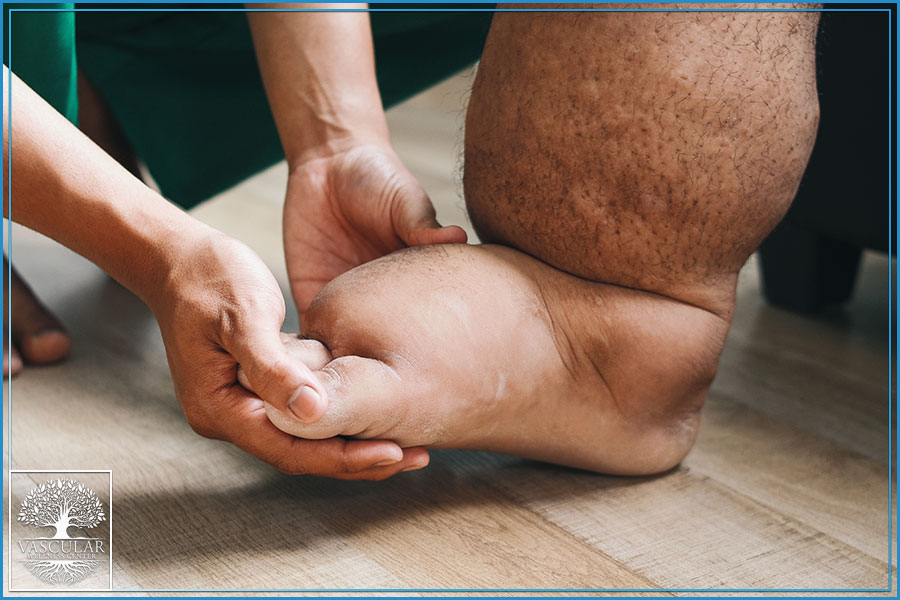
Lipodermatosclerosis
Also referred to as stasis dermatitis, sclerosing dermatitis, or woody edema, lipodermatosclerosis involves inflammation and thickening of the skin and underlying fatty tissue, primarily in the lower legs. It often stems from chronic venous insufficiency, where faulty vein valves hamper blood flow and increase pressure in the leg veins.
Progression & Prognosis
If left untreated, lipodermatosclerosis may worsen and lead to conditions such as skin ulcers or venous stasis dermatitis. With appropriate care—especially addressing the underlying venous insufficiency—symptoms can often be managed, and the disease’s progression slowed or halted.

Risk Factors & Symptoms of Lipodermatosclerosis
Risk Factors & Underlying Conditions
- Chronic venous insufficiency – Faulty valves in leg veins contribute to poor circulation and raised venous pressure
- Obesity – Excess weight puts more strain on leg veins, escalating the chance of venous insufficiency
- Prolonged standing or sitting – Jobs or activities involving extended periods upright or seated can promote lipodermatosclerosis
- Age – Veins become less elastic and efficient over time, increasing the likelihood of developing this condition
Symptoms:
- Discolored feet and legs
- Darkened skin near the ankles
- Swelling in the feet and ankles
- Leathery, flaky, or itchy skin
- Leg cramps, heaviness, or fatigue
- Aches, pain, or tenderness in the legs
- Foot pain
- Slow-to-heal wounds on the legs or feet
- Bulging varicose veins
- Warmth or redness in the legs
Treatments for Lipodermatosclerosis
Lifestyle Changes
Maintaining a healthy weight, exercising regularly, avoiding prolonged sitting or standing, and keeping the legs elevated can significantly help manage lipodermatosclerosis symptoms.
Endovenous Laser Therapy (EVLT)
Also known as endovenous laser ablation, EVLT is an outpatient procedure that uses a laser’s heat to seal off problematic varicose veins. Guided by ultrasound to locate the damaged vein, a fine laser is inserted through a small needle puncture under local anesthesia. This procedure typically lasts 20–45 minutes.
Radiofrequency Ablation (RFA)
A minimally invasive alternative to surgical vein stripping, RFA applies heat through a thin catheter placed under ultrasound guidance. A saline-lidocaine solution helps reduce discomfort, and the entire treatment usually takes only 10–15 minutes. Most patients can resume regular activities by the next day.
Superficial Vein Removal
Over time, superficial veins can expand, taking on a thick, rope-like appearance. Chronic pressure and inflammation often darken the skin around them.
High Ligation
This surgical approach involves tying off a compromised vein to redirect blood flow, and potentially removing the vein (vein stripping). Although less common than modern minimally invasive techniques, it may be recommended for severe venous disease. Performed as an outpatient procedure under general anesthesia, it boasts a high success rate in specific situations.
Compression Stockings
Offering a practical and economical way to boost lower-extremity circulation, compression stockings can be worn daily to reduce symptoms, encourage healthier blood flow, and lower the risk of blood clots. They are appropriate for both short- and long-term use, including after surgery.
Other Treatments Include
Early detection and proactive management are vital to preventing complications and improving the lives of individuals with lipodermatosclerosis. Additional options include:
- Varithena
- Sclerotherapy
- Iliac Vein Stenting
- Intravascular Ultrasound
- Venogram
- Venoplasty
- Venous Thrombectomy for DVT
- Venclose
- Phlebectomy
- Endovenous Ablation
